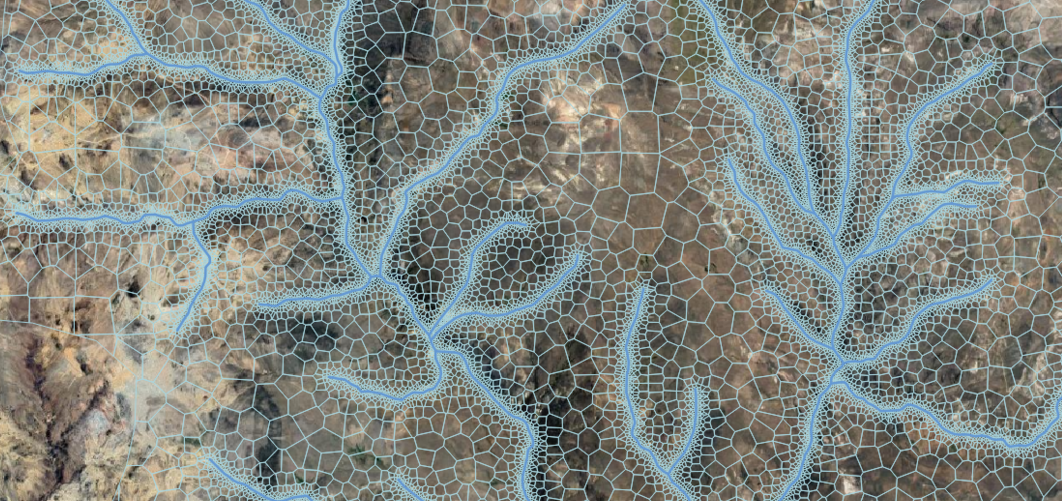Hi Deepa, the example on the web deosn't work me, anyway, try
#!/usr/bin/env python3
#
import geopandas as gpd, numpy as np
from scipy.spatial import Voronoi
from vedo import Points, Grid, delaunay2D, Mesh, show
shape = gpd.read_file('shps/rios.shp')
def vertexAsList(shape):
vertexList = []
for line in shape.iterrows():
partialList = []
if line[1].geometry.geom_type == 'Polygon':
pointList = line[1].geometry.exterior.coords.xy
elif line[1].geometry.geom_type == 'LineString':
pointObject = line[1].geometry.coords.xy
pointList = list(zip(pointObject[0],pointObject[1]))
for index, point in enumerate(pointList):
partialList.append(point)
vertexList += partialList
return np.array(vertexList)-[610000,8300000]
pts = Points(vertexAsList(shape))#.densify(.01)
grid = Grid([14500, 61700, 0], sx=24000, sy=26000, resx=30, resy=30).ps(1)
allpts = pts.points().tolist() + grid.points().tolist()
allpts = np.array(allpts)
deln = delaunay2D(allpts).lw(0.1)
#deln.smooth()
#vor = voronoi(allpts[:,(0,1)]) ## VTK IS TOO SLOW ON THIS!
vor = Voronoi(deln.points()[:,(0,1)])
regs = [] # filter out invalid indices
for r in vor.regions:
flag=True
for x in r:
if x<0: flag=False
if flag and len(r):
regs.append(r)
msh = Mesh([vor.vertices, regs])
msh.lw(0.1).cmap('Set3', list(range(len(regs))), on='cells')
show([deln, [msh,Points(deln)]], N=2, axes=dict(digits=3))



Hi @marcomusy,
I would like to create a geometry like the following in vedo.
source
For this, I would like to use vedo
I am not sure how to do step 3. Could you please give some ideas and help me with this?
Thanks a lot for all your support